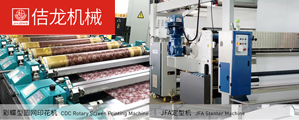Strong apparel exports expected to continue in Sep. 2021
Nov 04, 2021 | by Zhao Xinhua

Textile and apparel exports hit a record high for the same period
From January to September, China’s textile and apparel exports totaled USD 227.59 billion, up 5.6 percent year-on-year and 12.7 percent over the same period in 2019, hitting the highest level in history, according to China Customs. China’s textile and apparel exports hit a new high despite a dramatic 80 percent drop in masks and other pandemic prevention materials exports and unprecedented increases in costs. First, China’s industrial chain gives full play to its strength and resilience; second, international demand continues to pick up; third, part of the orders return; fourthly, the price rising pushes up the export.
Apparel exports hit a record high for the same period since 2016, but growth slowed quarter by quarter
From January to September, apparel exports reached USD 122.42 billion, up 25.3 percent year-on-year and 8.5 percent higher than the same period in 2019, hitting a six-year high for the same period. In the first and second quarters, the growth rate of China’s apparel export was 47.4 percent and 35.7 percent respectively. Due to the high base of last year, the growth rate slowed down significantly in the third quarter, falling to 9.4 percent, but the export scale is still at a high level.
Strong demand in the U.S. market leads high growth
International demand is strong, driven by the U.S. fiscal and monetary stimulus. Especially since March, the U.S. apparel retail sales have hit a record high, breaking the previous record for six consecutive months, combined with the recurrence of the pandemic in Vietnam, the second largest apparel supplier to the U.S., China’s apparel export has maintained a rapid growth. In July and August, about half of China’s apparel export growth came from exports to the U.S.
China’s market share in the U.S. and Japan is stable, while its share in the EU is squeezed by Turkey and others
In the first eight months, China’s apparel import market share in the United States, the European Union and the United Kingdom fell by 0.7, 2.3 and 3.1 percentage points year-on-year, respectively, while its market share in Japan and South Korea increased by 0.8 and 1.7 percentage points year-on-year, respectively. Among other major suppliers, Turkey performed well with 30.3 percent growth in the first eight months, India’s apparel exports grew 36.5 percent in the first half despite the impact of the pandemic, and Vietnam increased by 15.8 percent in the first eight months of the year.
Trend outlook 1: Affected by the high base of last year, it is expected that the growth rate of apparel export in the fourth quarter of this year will continue to slow down, but still remain resilient.
The recovery of demand in the international market is evident, but the negative impact of the high inflation on consumption cannot be ignored. In August, the price index of personal consumption in the U.S. recorded the highest increase since 1991. while consumption in the European Union and Japan has yet to recover to pre-pandemic levels. Central bank governors from the U.S., Europe, Japan and Britain warned in late September that worsening supply chain bottlenecks would lead to persistent high inflation.
Supply chains in other countries are gradually recovering, the scale and sustainability of order backflow should be carefully judged. Ho Chi Minh City has gradually resumed work and production, with nearly 90 percent and 60 percent of employees returning to work in early October. Some companies have received export orders until the second quarter of next year.
Trend Outlook 2: With the recovery of foreign demand, the industry will face greater cost and capacity pressure
High sea freight, shipping capacity tension is difficult to alleviate. The U.S. government’s recent request for round-the-clock operations at the ports of Long Beach and Los Angeles, but supply chain bottlenecks are unlikely to be resolved anytime soon. On October 9, the Shanghai container-freight index failed to extend its earlier correction and rose to 4,647.6 points, six times last year’s low.
The price of cotton and other raw materials has risen irrationally from the fundamentals of supply and demand, driving some intermediate products to follow the price increase, far exceeding the ability of downstream enterprises and the market, and profits are severely squeezed.
Tight energy supply and rising prices have become a common phenomenon, which inhibits the production capacity of all links in the whole industrial chain. First, it is difficult to complete orders, second, the delivery date is not guaranteed, and third, it boosts the cost of various factors.
The RMB exchange rate remained strong and continued to reduce export profits. In the first three quarters, the average RMB exchange rate appreciated by about 8 percent compared with the same period last year.
In the first eight months, the average unit price of woven and knitted garments increased by 9.1 percent and 7.5 percent year-on-year respectively, showing the impact of rising costs on export prices. In the future, whether costs can continue to be passed on to prices will be constrained by many factors.








